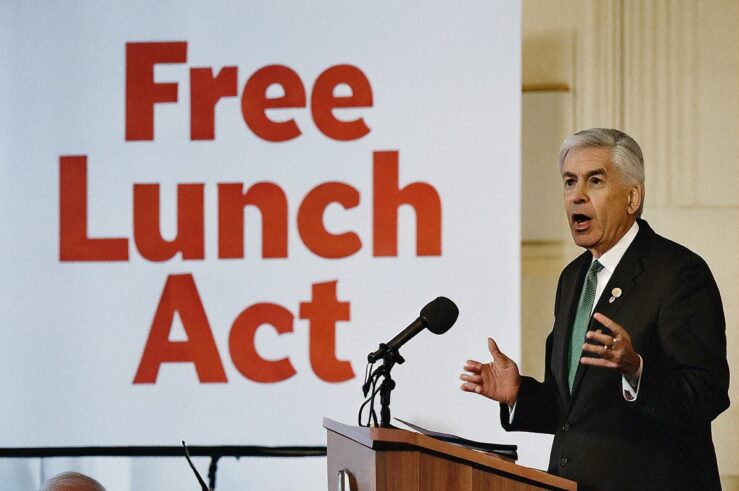The Ninth Circuit made waves recently with its decision in Lenz v. Universal Music Corp., in which it decided that a plaintiff in a copyright infringement case must first take potential fair use considerations into account before filing a takedown notice under the DMCA. Lenz, represented by the EFF, claimed that Universal had not formed a good faith belief that an infringement had occurred as required by § 512(c)(3)(A)(v). Consequently, Lenz sought damages under § 512(f), alleging that Universal made material misrepresentations in issuing a takedown notice without first considering a fair use defense.
In reaching its holding, the Ninth Circuit decided that fair use should not be considered an affirmative defense–which is to say that it is not properly considered after an allegation, but must be considered when determining whether a prima facie claim exists. It starts from the text of the Copyright Act itself. According to 17 U.S.C. § 107
Notwithstanding the provisions of sections 106 and 106A, the fair use of a copyrighted work … is not an infringement of copyright.
In support of its contention, the Ninth Circuit goes on to cite a case in the Eleventh Circuit as well as legislative material suggesting that Congress intended that fair use no longer be considered as an affirmative defense. Thus, in the Ninth Circuit’s view, such fair use at best qualifies as a sort of quasi-defense, and most likely constitutes an element of an infringement claim. After all, if fair use is literally non-infringing, then establishing infringement requires ruling out fair use, as well.
Or so says the Ninth Circuit. But it takes little more than a Google search — let alone the legal research one should expect of federal judges and their clerks — to realize that the court is woefully, and utterly, incorrect.
Is Fair Use an Affirmative Defense ?
The Supreme Court has been perfectly clear that fair use is in fact an affirmative defense. In Campbell v. Acuff-Rose, the Supreme Court had occasion to consider the nature of fair use under § 107 in the context of determining whether 2 Live Crew’s parody of Roy Orbison’s “Pretty Woman” was a permissible use. In considering the fourth fair use factor, “the effect of the use upon the potential market for or value of the copyrighted work,” the Court held that “[s]ince fair use is an affirmative defense, its proponent would have difficulty carrying the burden of demonstrating fair use without favorable evidence about relevant markets.”
Further, in reaching this opinion the Court relied on its earlier precedent in Harper & Row, where, in discussing the “purpose of the use” prong of § 107, the Court said that “[t]he drafters [of § 107] resisted pressures from special interest groups to create presumptive categories of fair use, but structured the provision as an affirmative defense requiring a case-by-case analysis.” Not surprisingly, other courts are inclined to follow the the Supreme Court. Thus the Eleventh Circuit, the Southern District of New York, and the Central District of California (here and here), to name but a few, all explicitly refer to fair use as an affirmative defense. Oh, and the Ninth Circuit did too, at least until Lenz.
The Ninth Circuit Dissembles
As part of its appeal, Universal relied on the settled notion that fair use is an affirmative defense in building its case. Perhaps because this understanding of fair use is so well established, Universal failed to cite extensively why this was so. And so (apparently unable to perform its own legal research), the Ninth Circuit dismissed § 107 as an affirmative defense out of hand, claiming that
Universal’s sole textual argument is that fair use is not “authorized by the law” because it is an affirmative defense that excuses otherwise infringing conduct … Supreme Court precedent squarely supports the conclusion that fair use does not fall into the latter camp: “[A]nyone who . . . makes a fair use of the work is not an infringer of the copyright with respect to such use.” Sony Corp. of Am. v. Universal City Studios, Inc., 464 U.S. 417, 433 (1984).”
It bears noting that the Court in Sony Corp. did not discuss whether or not fair use is an affirmative defense, whereas Acuff Rose (decided 10 years after Sony Corp.) and Harper & Row decisions do.
To shore up its argument, the Ninth Circuit then goes on to cite the Eleventh Circuit for the notion that the 1976 Act fundamentally changed the nature of fair use, moving it away from its affirmative defense roots. Quoting Bateman v. Mnemonics, Inc., the court claims that
Although the traditional approach is to view “fair use” as an affirmative defense, . . . it is better viewed as a right granted by the Copyright Act of 1976. Originally, as a judicial doctrine without any statutory basis, fair use was an infringement that was excused—this is presumably why it was treated as a defense. As a statutory doctrine, however, fair use is not an infringement. Thus, since the passage of the 1976 Act, fair use should no longer be considered an infringement to be excused; instead, it is logical to view fair use as a right. Regardless of how fair use is viewed, it is clear that the burden of proving fair use is always on the putative infringer.
But wait — didn’t I list the Eleventh Circuit as one of the (many) courts that have held fair use to be an affirmative defense? Why yes I did. It turns out that, as Devlin Hartline pointed out last week, the Ninth Circuit actually ripped the Eleventh Circuit text completely out of context. The full Bateman quote (from a footnote, it should be noted) is as follows:
Fair use traditionally has been treated as an affirmative defense to a charge of copyright infringement …. In viewing fair use as an excused infringement, the court must, in addressing this mixed question of law and fact, determine whether the use made of the original components of a copyrighted work is “fair” under 17 U.S.C. § 107 … Although the traditional approach is to view “fair use” as an affirmative defense, this writer, speaking only for himself, is of the opinion that it is better viewed as a right granted by the Copyright Act of 1976. Originally, as a judicial doctrine without any statutory basis, fair use was an infringement that was excused—this is presumably why it was treated as a defense. As a statutory doctrine, however, fair use is not an infringement. Thus, since the passage of the 1976 Act, fair use should no longer be considered an infringement to be excused; instead, it is logical to view fair use as a right. Regardless of how fair use is viewed, it is clear that the burden of proving fair use is always on the putative infringer.” (internal citations omitted, but emphasis added)
Better yet, in a subsequent opinion the Eleventh Circuit further clarified the position that the view of fair use as an affirmative defense is binding Supreme Court precedent, notwithstanding any judge’s personal preferences to the contrary.
But that’s not the worst of it. Not only did the court shamelessly misquote the Eleventh Circuit in stretching to find a justification for its prefered position, the court actually ignored its own precedent to the contrary. In Dr. Seuss Enterprises, L.P. v. Penguin Books USA, Inc., the Ninth Circuit held that
Since fair use is an affirmative defense, [the Defendant-Appellants] must bring forward favorable evidence about relevant markets. Given their failure to submit evidence on this point … we conclude that “it is impossible to deal with [fair use] except by recognizing that a silent record on an important factor bearing on fair use disentitle[s] the proponent of the defense[.]
Further, even if the Lenz court is correct that § 107 “unambiguously contemplates fair use as a use authorized by the law” — despite Supreme Court precedent — the authority the Ninth Circuit attempts to rely upon would still require defendants to raise a fair use defense after a prima facie claim was made, as “the burden of proving fair use is always on the putative infringer.”
It Also Violates a Common Sense Reading of the DMCA
As with all other affirmative defenses, a plaintiff must first make out a prima facie case before the defense can be raised. So how do we make sense of the language in § 107 that determines fair use to not be infringement? In essence, it appears to be a case of inartful drafting. Particularly in light of the stated aims of the DMCA — a law that was enacted after the Supreme Court established that fair use was an affirmative defense — the nature of fair use as an affirmative defense that can only be properly raised by an accused infringer is as close to black letter law as it gets.
The DMCA was enacted to strike a balance between the interests of rightsholders in protecting their property, and the interests of society in having an efficient mechanism for distributing content. Currently, rightsholders send out tens of millions of takedown notices every year to deal with the flood of piracy and other infringing uses. If rightsholders were required to consider fair use in advance of each of these, the system would be utterly unworkable — for instance, in Google’s search engine alone, over 54 million removal requests were made in just the month of August 2015 owing to potential copyright violations. While the evisceration of the DMCA is, of course, exactly what the plaintiffs (or more accurately, EFF, which represented the plaintiffs) in Lenz wanted, it’s not remotely what the hard-wrought compromise of the statute contemplates.
And the reason it would be unworkable is not just because of the volume of the complaints, but because fair use is such an amorphous concept that ultimately requires adjudication.
Not only are there four factors to consider in a fair use analysis, but there are no bright line rules to guide the application of the factors. The open ended nature of the defense essentially leaves it up to a defendant to explain just why his situation should not constitute infringement. Until a judge or a jury says otherwise, how is one to know whether a particular course of conduct qualifies for a fair use defense?
The Lenz court even acknowledges as much when it says
If, however, a copyright holder forms a subjective good faith belief the allegedly infringing material does not constitute fair use, we are in no position to dispute the copyright holder’s belief even if we would have reached the opposite conclusion. (emphasis added)
Thus, it is the slightest of fig leaves that is necessary to satisfy the Lenz court’s new requirement that fair use be considered before issuing a takedown notice.
What’s more, this statement from the court also demonstrates the near worthlessness of reading a prima facie fair use requirement into the takedown requirements. Short of a litigant explicitly disclaiming any efforts to consider fair use, the standard could be met with a bare assertion. It does, of course, remain an open question whether the computer algorithms the rightsholders employ in scanning for infringing content are actually capable of making fair use determinations — but perhaps throwing a monkey wrench — any monkey wrench — into the rightsholders’ automated notice-and-takedown systems was all the court was really after. I think we can at least be sure that that was EFF’s aim, anyway, as they apparently think that § 512 tends to be a tool of censorship in the hands of rightsholders.
The structure of the takedown and put-back provisions of the DMCA also cut against the Lenz court’s view. The put-back requirements of Section 512(g) suggest that affirmative defenses and other justifications for accused infringement would be brought up after a takedown notice was submitted. What would be the purpose of put-back response, if not to offer the accused infringers justifications and defenses to an allegation of infringement? Along with excuses such as having a license, or a work’s copyright being expired, an alleged infringer can bring up the fair use grounds under which he believed he was entitled to use the work in question.
In short, to require a rightsholder to analyze fair use in advance of a takedown request effectively requires her to read the mind of an infringer and figure out what excuse that party plans to raise as part of her defense. This surely can’t have been what Congress intended with the takedown provisions of the DMCA — enacted as they were years after the Supreme Court had created the widely recognized rule that fair use is an affirmative defense.
Well, widely recognized, that is, except in the Ninth Circuit. This month, anyway.
Update: I received some feedback on this piece which pointed out an assumption I was making with respect to the Ninth Circuit’s opinion, and which deserves a clarifying note. Essentially, the Lenz court splits the concept of affirmative defenses into two categories: (1) an affirmative defense that is merely a label owing to the procedural posture of a case and (2) an affirmative defense, as it is traditionally understood and that always puts the burden of production on a defendant. By characterizing affirmative defenses in this way, the Lenz court gets to have its cake and eat it too: when an actual proceeding is filed, a defendant will procedurally have the burden of production on the issue, but since fair use is at most a quasi-affirmative defense, the court felt it was fair to shift that same burden onto rightsholders when issuing a takedown letter. So technically the court says that fair use is an affirmative defense (as a labeling matter), but it does not practically treat is as such for the purposes of takedown notices.




